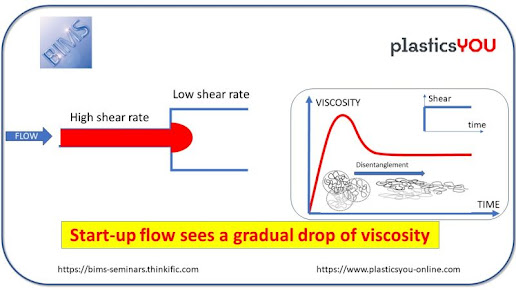Methacrylate adhesives show their strength
The integrity of structural adhesives
Structural adhesives are fast emerging as the preferred alternative to conventional mechanical techniques, such as bolts, rivets and welding, for bonding a wide variety of materials.
Comprising three main categories, including epoxy, polyurethane and methacrylate, the benefits of structural adhesives are now well documented. Providing a low weight answer to today’s engineering issues, they can be used to bond a variety of substrates, facilitating the strength and integrity of bonded structures whilst lowering stresses, enhancing chemical and temperature resistance, and optimising manufacturing methods.
Design trends
There’s no doubt that a variety of composite, plastic and non-plastic materials will continue to play key roles in the drive to create lighter structures across different industries moving forward – from the electronics industry, through to the automotive, aerospace, general transport and oil and gas industries, the list goes on. The consequence of this trend is that various material combinations will need to be bonded together, and structural adhesives are set to play an even greater role in facilitating this.
Performance
When you look at how the trend in using various material combinations is evolving, you begin to see why demand for methacrylate adhesives is rapidly increasing.
Based on thermoset adhesive formulations that provide excellent structural properties, the combination of polymers and impact modifiers have seen methacrylate adhesives emerge more recently to fully compete with polyurethane and epoxy adhesives.
Methacrylate adhesives provide a special balance of high tensile, shear and peel strengths with the maximum resistance to shock, stress and impact across a wide temperature range. They can generally be applied without any or little surface preparation when joining similar and dissimilar materials.
They are extremely versatile in offering good gap filling (up to 8mm) and speed of cure characteristics. In addition, methacrylates are tolerant to off-ratio mixing, and remain strong and durable under severe environmental conditions.
Araldite 2048 and Araldite F348
These methacrylate adhesives exhibit some of the highest lap shear strengths available (24 MPa on aluminium), along with high elongation, making them ideal for dynamic loading. These benefits are offered in combination with good chemical resistance, low ionic content (for electronic applications) and ease of application. They also maintain extremely high impact resistance and elasticity at subfreezing temperatures.
These properties are particularly advantageous for industries such as the oil and gas sector, where these adhesives have been used to assemble offshore polycarbonate pipes onto steel housing, or in the electronics sector, where they have helped both stainless steel and coated substrates withstand impact resistance and vibration.
They demonstrate that it is possible to achieve bonding between different materials whilst managing structural and weight issues within the design concept. By being generally faster setting than other adhesives and requiring little or no surface preparation, methacrylates facilitate an even better manufacturing solution.
More information: www.huntsman.com
Structural adhesives are fast emerging as the preferred alternative to conventional mechanical techniques, such as bolts, rivets and welding, for bonding a wide variety of materials.
Comprising three main categories, including epoxy, polyurethane and methacrylate, the benefits of structural adhesives are now well documented. Providing a low weight answer to today’s engineering issues, they can be used to bond a variety of substrates, facilitating the strength and integrity of bonded structures whilst lowering stresses, enhancing chemical and temperature resistance, and optimising manufacturing methods.
Design trends
There’s no doubt that a variety of composite, plastic and non-plastic materials will continue to play key roles in the drive to create lighter structures across different industries moving forward – from the electronics industry, through to the automotive, aerospace, general transport and oil and gas industries, the list goes on. The consequence of this trend is that various material combinations will need to be bonded together, and structural adhesives are set to play an even greater role in facilitating this.
Performance
When you look at how the trend in using various material combinations is evolving, you begin to see why demand for methacrylate adhesives is rapidly increasing.
Based on thermoset adhesive formulations that provide excellent structural properties, the combination of polymers and impact modifiers have seen methacrylate adhesives emerge more recently to fully compete with polyurethane and epoxy adhesives.
Methacrylate adhesives provide a special balance of high tensile, shear and peel strengths with the maximum resistance to shock, stress and impact across a wide temperature range. They can generally be applied without any or little surface preparation when joining similar and dissimilar materials.
They are extremely versatile in offering good gap filling (up to 8mm) and speed of cure characteristics. In addition, methacrylates are tolerant to off-ratio mixing, and remain strong and durable under severe environmental conditions.
Araldite 2048 and Araldite F348
These methacrylate adhesives exhibit some of the highest lap shear strengths available (24 MPa on aluminium), along with high elongation, making them ideal for dynamic loading. These benefits are offered in combination with good chemical resistance, low ionic content (for electronic applications) and ease of application. They also maintain extremely high impact resistance and elasticity at subfreezing temperatures.
These properties are particularly advantageous for industries such as the oil and gas sector, where these adhesives have been used to assemble offshore polycarbonate pipes onto steel housing, or in the electronics sector, where they have helped both stainless steel and coated substrates withstand impact resistance and vibration.
They demonstrate that it is possible to achieve bonding between different materials whilst managing structural and weight issues within the design concept. By being generally faster setting than other adhesives and requiring little or no surface preparation, methacrylates facilitate an even better manufacturing solution.
More information: www.huntsman.com


Comments
Post a Comment